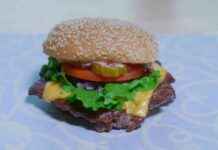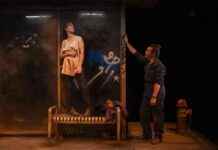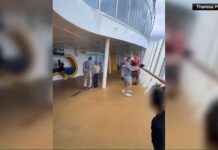The war in Gaza begins in Ashkelon, 30 kilometers from the strip. At the height of this city there is the first control on the road coming from Tel-Aviv and from this point the presence of military vehicles intensifies. No one can approach the border without authorization. It’s a war zone. Residents of all the towns surrounding the strip have been evacuated and do not know when they will return to their homes.
In a government bus escorted by the military and with half a hundred international journalists, we head to the Moishav Netiv Haasara, the town closest to the border with Gaza – only 300 meters away – and one of the first to suffer on October 7 the terrorist attack by Hamas, which cost the lives of 1,200 people and culminated in the transfer of 240 hostages to Gaza.
Before arriving, after leaving behind a solar panel plant, we pass through muddy fields turned into barracks, ammunition depots and concrete walls for soldiers to shelter in case rockets come from the other side, something which happens despite Israel saying it controls much of northern Gaza.
We are in the rear. From the entrance to the moixav – a community of agricultural origin that differs from the kibbutz because the property is not collective, but private – you can see a large plume of smoke on the horizon and you can hear the bombardments of ‘Israel on Gaza. Distant bursts of automatic weapons fire are also heard and a large white tactical balloon is held over the border line.
After receiving the corresponding security advice, the journalistic entourage walks the empty streets accompanied by two residents who have come specifically to explain to the press what happened that terrifying morning. One of them, Benny Vainer, carries an assault rifle and explains that he was not afraid that day for himself, but for his three children, and that he concentrated on confronting Hamas fighters with the intention of take them away from their family. “My greatest concern was that, if I died, the terrorists would not find my family, who were in the shelter,” he says.
892 people, about 300 families, lived in the moixav. It was a quarter past seven in the morning when the community’s security guard saw six paramotors flying over the wall that separates it from Gaza and was able to raise the alarm. Alert that also served to prevent nearby kibbutzim. In total, 40 members of Hamas arrived in Netiv Haasara, the six who did so by air and the rest in cars and motorbikes. With automatic weapons, grenades and rocket launchers they killed 17 residents.
Vainer and his family were saved, as was Hila Fenlon, the other resident accompanying us. “We are lucky”, says Fenlon before criticizing the Government. “The political leaders of my country are responsible for my security and they failed; they must resign”, he says. “I educate my children in peace, so that they love everyone and be happy; they play PlayStation, I don’t want them to see my rifle”, adds Vainer, for his part, with a tone of resignation.
Unexpectedly, the military leader of the visit shouts a dry order: “Everyone on the ground, everyone on the ground!”. And we journalists throw ourselves on the ground, crowding next to the low wall of a parterre or any street corner, with our hands on our heads, holding the back of our helmets, as we’ve been told before. Bulletproof vests make the sudden contact with the asphalt a little more comfortable. Ten, fifteen, twenty endless seconds. Several explosions are heard over our heads. The Iron Dome – the Israeli anti-missile system – has worked. The danger has passed.
The group stops at a completely destroyed house. set on fire It was made of wood and only the metal structure remains. The terrorists attacked her with a rocket and murdered the Inon couple. Bilha, 75, and Yakovi, 78. Both progressive, pacifist and very supportive of the Palestinians. His son, Maoz Inon, 48, is also a peace activist and has become popular in Israel because he set up a tent in front of the Parliament in Jerusalem more than a week ago. Despite the violent death of his parents, Maoz calls for an end to the war.
Bilha was an artist and some of her ceramic works have survived in the burnt garden, her private museum. Intact, some ceramic chickens watch the reporters next to some dead trees but still laden with burnt grapefruits.








